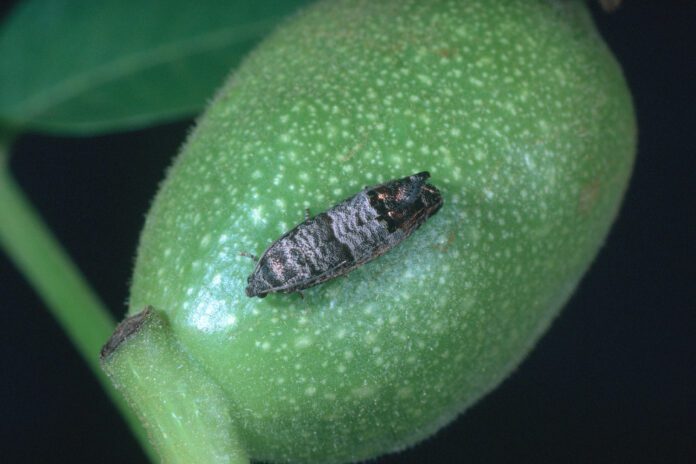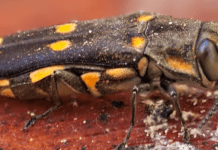Biopesticides are a group of pesticides with active ingredients of biological or natural origin and contain either live or dead microorganisms, their metabolites, plant- or animal-derived materials or other such materials with pesticidal properties. Increasing demand for non-synthetic pesticides and sustainable pest management options, related regulatory policies, pesticide residue restrictions for the export market and growing pest problems and resistance issues that require additional non-conventional options are some of the reasons that contributed to a growing demand for biopesticides in the past several years.
The U.S. biopesticide market is the largest due to the volume of agriculture, regulatory requirements and technological innovations and their adoption. According to the U.S. EPA, there are 389 biopesticidal active ingredients registered in the country out of which 197 have been formulated into 1875 products that include 789 bioinsecticides, 642 biofungicides, 191 biorodenticides, 113 bioherbicides, 84 bionematicides, 41 bioalgaecides, 8 biobactericides and 7 biofumigants providing non-synthetic control opportunities for almost all kinds of pests.
Major categories of biopesticide active ingredients include bacteria, fungi, nematodes, viruses, plant extracts, toxic metabolites and others such as diatomaceous earth, mineral oil and potassium salts of fatty acids. While not all these active ingredient groups are available for all categories of pests, most are available for controlling arthropod pests and plant pathogens.
The RNA interference (RNAi) technology has added a new generation of biopesticides to the arsenal. This technology involves using small molecules of double-stranded RNAs (ribonucleic acid) that interfere with a very specific target of the target pest. RNA carries the genetic code from DNA (deoxyribonucleic acid) in the cell nucleus and translates it to make proteins that are necessary for numerous physiological processes in an organism. RNAi is a natural phenomenon interfering with protein-making as needed by the cell to regulate genetic processes or attack harmful invaders such as viruses. RANi-based pesticides block the synthesis of a specific protein in the target insect pest or pathogenic microorganism leading to its death or growth inhibition. RNAi-based pesticides will be under Group 35 of the Insecticide Resistance Action Group classification with targeted protein suppression as the mode of action. The first RNAi-based product will soon be available against the Colorado potato beetle.

Need for More Research
During the earlier years of biopesticide development, there were only a few companies that produced them. Later, several small companies within or outside the U.S. produced and marketed biopesticides. With their market growth, several major companies are also involved either by developing their own products or acquiring others’. There are nearly 150 small and large companies in the U.S. that have biopesticides (www.mixingbowl.com). With such an interest, several active ingredients are being developed into products and their manufacturers are investing in improving the formulations for increased efficacy, stability and shelf life. However, the knowledge about various biopesticides, their efficacy and use strategies is not expanding as rapidly as their market. Investing in research and education about biopesticides appears to be one of the top priorities for their effective use.
Here are a few recommendations in addressing the knowledge gaps:
Efficacy
One of the common concerns about biopesticides is their efficacy. It is very important to generate information on their efficacy as standalone products in combination and rotation with other products, and also as a part of an integrated pest management (IPM) program. Researchers, growers, crop care professionals and manufacturers and distributors of biopesticides need to work together in this effort to build the efficacy database of various pesticides and outreach.
Information
Information on how each biopesticide active ingredient works, its target pests or life stages of pests, microclimatic requirements, storage and handling, compatibility with other agricultural inputs or operations, strategies for enhancing their efficacy and other related topics would be helpful for their successful use. While some of the information is available on the labels and marketing material, other details are either lacking or not easily available.
Limitations
Higher cost compared to several synthetic pesticides, shorter shelf life and field stability, and special storage and handling requirements for some of the biopesticides are some limitations to be addressed. Manufacturers could explore strategies and technologies that help reduce the product cost and address the shelf life and stability of the formulations.
Education
Academic institutions need to develop courses to train students in using biopesticides and other biological solutions. While agricultural science degrees generally offer courses that cover biological control concepts, there are limited or no training opportunities in other areas of biologicals such as microbial and botanical pesticides or biostimulants. For example, there are several biopesticides based on entomopathogens (i.e., pathogens of arthropods), such as bacteria, fungi, nematodes and viruses, but it appears there is only one graduate level course offered online in the U.S. College courses, workshops and other such educational opportunities are critical for continuing education and training future researchers, educators and users of biopesticides.
Commodity groups, government agencies and private entities should also consider biopesticide research, outreach and education as one of their priorities, provide funding, and encourage collaborative projects that address the abovementioned needs.
When used with a good strategy, keeping both the short-term and long-term goals in mind, biopesticides make a very important part of IPM against a variety of pests on a variety of crops. In tree nut crops, biopesticides can be used against mites, lepidopteran and hemipteran pests, and various bacterial and fungal diseases. Here are a few examples of biopesticide options that can be used against some of the arthropod pests.

While using biopesticides, it is also important to remember pests develop resistance even to biopesticides. Resistance to Bacillus thuringiensis and spinosad, for example, have been reported in several pest species. To minimize the risk of resistance development, some biopesticides, particularly those based on toxins or toxic metabolites, should be rotated with other options.
Biopesticides can work very well when used appropriately based on numerous research studies. The future of biopesticide use is promising, but their effective use towards sustainable crop production requires a collective effort from many individuals and entities by focusing on research, outreach and training so they can be successfully used in IPM.
References
Dara, S. K. 2017. Entomopathogenic microorganisms: modes of action and role in IPM. UCANR eJournal of Entomology and Biologicals May 20, 2017. https://ucanr.edu/blogs/blogcore/postdetail.cfm?postnum=24119
Dara, S. K. 2017. Insect resistance to biopesticides. UCANR eJournal of Entomology and Biologicals December 6, 2017. https://ucanr.edu/blogs/blogcore/postdetail.cfm?postnum=25819
Dara, S. K. 2021. Biopesticides: categories and use strategies of IPM and IRM. UCANR eJournal of Entomology and Biologicals March 18, 2021. https://ucanr.edu/blogs/blogcore/postdetail.cfm?postnum=46134
Lacey, L. A. and R. Georgis. 2012. Entomopathogenic nematodes for control of insect pests above and below ground with comments on commercial production. J. Nematol. 44: 218-225.











